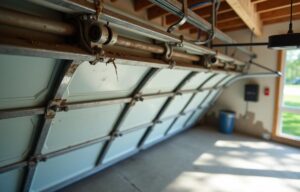
When to Replace vs. Repair: Maintenance Tips to Help You Decide
Knowing when to replace vs. repair can save you time and money on maintenance. repair is a question many homeowners face when a favorite appliance starts acting up. We’ve all experienced that moment of frustration: the washing machine stops spinning, or the refrigerator refuses to stay cool. In these moments, making the right call can feel daunting. Luckily, a few practical steps can set you on the right path toward a smarter maintenance decision.
It’s never just about the quick fix; thinking long-term is what truly keeps your home in top shape. Whether you’re worried about the cost of replacement or holding onto an older device for its sentimental worth, it helps to weigh the pros and cons. By knowing when to replace or fix an item, you’ll save money and ensure your household runs as smoothly as possible.
Why Timely Maintenance Decisions Matter for Every Household
Maintenance decisions play a big part in keeping your home running comfortably. Regular home maintenance can help you spot small issues, like a subtle leak or a quietly humming motor, before they spiral into costly disasters. Waiting until a broken appliance reaches the point of no return isn’t just stressful—it also eats up your budget and time.
Proactive care also preserves the lifetime of product components, which can help you enjoy a safer home environment. Instead of dealing with endless repair services when something fails abruptly, you’ll be prepared with a schedule that fits your household’s needs. This approach gives you the flexibility to do a quick DIY repair when it’s manageable, or to call in a service technician if it’s a bigger job.
The Role of Early Detection
Spotting red flags early can save you from extensive labor costs and potential safety issues. A slight rattle in your dryer might be a simple belt issue that can be fixed quickly. If left unchecked, it could develop into a more expensive repair or push you toward appliance replacement. By tackling those subtle problems, you stay ahead of costly surprises.
Looking Beyond the Cost of Replacement
When your fridge is on the fritz or your oven just won’t heat evenly, it’s tempting to fixate on the immediate cost of replacement. Yet there’s more to consider, including how your choice affects overall energy efficiency. An older appliance often has limited features, higher utility bills, and more frequent breakdowns over time.
By doing a cost comparison, you can evaluate whether repairing will merely postpone a bigger expense. Replacement might come with higher upfront installation costs, but it could also yield significant savings on your monthly bills. Sometimes, spending a bit more initially offers better long-term value, especially if you’re upgrading to a newer, more energy-efficient model.
Factoring in Value Assessments
People often think about their household budget rather than the product’s value assessment over its entire product lifecycle. If you need frequent repairs, it may be time to weigh your upgrade potential. A model with better energy efficiency doesn’t just save on utility bills; it also enhances your home’s overall sustainability practices. Keep in mind that advanced features might also boost convenience and maybe even your property’s resale appeal.
Key Considerations for Appliance Repair and Replacement
Appliance repair can be tricky, especially if you’re unsure whether you should replace or fix a particular item. Your decision often hinges on parts availability, time investment, and the device’s service history. If you’ve already spent considerable money on equipment restoration, it might be time to explore new appliances.
Major home repair projects don’t just involve the immediate fix. For instance, if your dishwasher repeatedly leaks, you risk damaging floors and cabinets. A new dishwasher might not only be better sealed but also come with extended warranty coverage that offers peace of mind. Many consumers also consider service plans to further reduce the risk of future repair expenses.
Installation Costs and Durability
When you decide to buy new, installation costs can come as an unwelcome surprise. However, modern appliances often promise better durability due to advancements in technology. They’re designed to handle higher loads, use less water, and consume less electricity. factoring these benefits helps ensure your home remains efficient and free of complicated breakdowns.
Balancing Financial Implications and Long-Term Value
Financial implications often loom largest when you’re torn between repair vs. replace. Buying new can feel expensive, but continuous repairs can really add up. The true cost becomes clearer once you factor in the labor costs for each repair, your time spent waiting for service technicians, and the possibility of recurring breakdowns.
Long-term value comes into play when you look at the bigger picture. Opting for a brand-new refrigerator loaded with energy-saving features can represent a solid investment over its lifespan. In contrast, clinging to that old, broken appliance with multiple issues can eat into your budget and peace of mind. By embracing consumer choices that favor quality, you minimize risk while keeping your home comfortable and efficient.
Planning Ahead for Product Lifespan
Each appliance has its own maintenance schedule and typical product lifespan. Before committing to a new purchase, read up on average lifespans and product reviews to ensure you get the best bang for your buck. Reputable brands often build appliances that stand up to daily wear and tear. Checking warranty coverage is also vital, since it can offset unexpected repair services should something go wrong.
Exploring Sustainable Options to Minimize Environmental Impact
Sustainable options are more important than ever, especially when home repair and replacements affect the planet. Throwing away old appliances can have a significant environmental impact if they end up in landfills. Recycling or donating working parts is a more eco-friendly path, and many local programs can help you with responsible disposal.
Upgrading to energy-efficient devices pays off for the planet and can lower your monthly bills. Newer models often use the latest technology to decrease water and energy consumption. Over time, that translates into savings and contributes to more sustainable living practices. When possible, look for labels indicating reduced emissions and lower resource consumption.
Making Environmentally-Friendly Consumer Choices
Your decision to repair or replace goes beyond finances and convenience. It also touches on sustainability practices and how you manage your household’s carbon footprint. Even small steps like fixing a minor glitch can extend an appliance’s life, sparing landfills from extra waste. However, if an old model is constantly draining energy, a newer unit could be the greener choice in the grand scheme of things.
Service Plans and Ongoing Care
Another key factor is how a service plan or extended warranty might influence your final decision. A plan that covers routine checkups can prolong each product’s durability and offset certain repair services. By consistently examining parts for wear-and-tear, you can fix minor issues yourself or call a professional assessment before they turn major. This kind of care also volunteers a peace of mind that your investment is protected.
Making decisions about broken appliances doesn’t have to be daunting. Jot down the pros, cons, and overall implications each option carries. It’s a balancing act that involves cost comparison, environmental factors, and the lifetime of product performance. Whether you’re a DIY repair enthusiast or someone who prefers a brand-new purchase, remember that the best choice is the one that keeps your home efficient, safe, and aligned with your goals.


